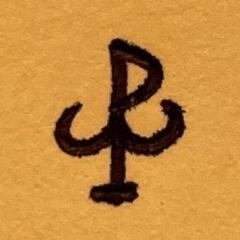Balance staff replacement
-
Recently Browsing
- No registered users viewing this page.
-
Topics
-
Posts
-
You know, building a complete balance complete out of all new parts takes more work than just assembly . Most west end watches were powered by FHF movements, some by AS and other movement makes as well , some pieces of the Secundus collection even came with longines movements. ----- In case you do not know this movement's caliber No, put up some pix in IDENTIFY THIS MOVEMENT ---- . subforum, one pic of the keyless would do. Material houses such as cousins.uk are likely to carry the parts you need. Providing serviced properly and a simple restoration this watch is likely to fetch $250 upwards on ebay. No shortage of help and advice on WRT and by the end of this thread we enjoy seeing your watch run happy. Regs
-
How would it bend like that? Maybe an inexperienced tinkerer tried to remove the weight by levering it up... I'd keep an eye out for other problems in this one, especially bent or broken train wheel/balance pivots. By the way, since we're all learning here, you could have a go at fixing this one! Maybe some careful whacks taps on a staking set (if you have one) would do it. Worst case, you still have a broken rotor. No idea, I've never tried to repair this kind of damage. Of course, get the replacement if you want, but don't pass up on a learning experience.
-
Thanks again for your help. I have cleaned everything, apart from the mainsprings and barrels, and it's all nice and shiny. I have cleaned the holes with dry peg wood sticks. I haven't oiled anything yet. I have temporarily reassembled the going train and am very pleased to say that for the past 2 hours it has been ticking nicely. The replacement hourwheel which I referred to in my original post fits very loosely but nonetheless seems to engage and travel round perfectly well. So now I need to reassemble the strike train. Is there a set of diagrams which I can refer to for this? The strike wheels have dots marked on them which must be designed to help but I don't know which one aligns with which.
-
I filed a Seiko regulator wrench out of a screwdriver.






Recommended Posts
Join the conversation
You can post now and register later. If you have an account, sign in now to post with your account.
Note: Your post will require moderator approval before it will be visible.